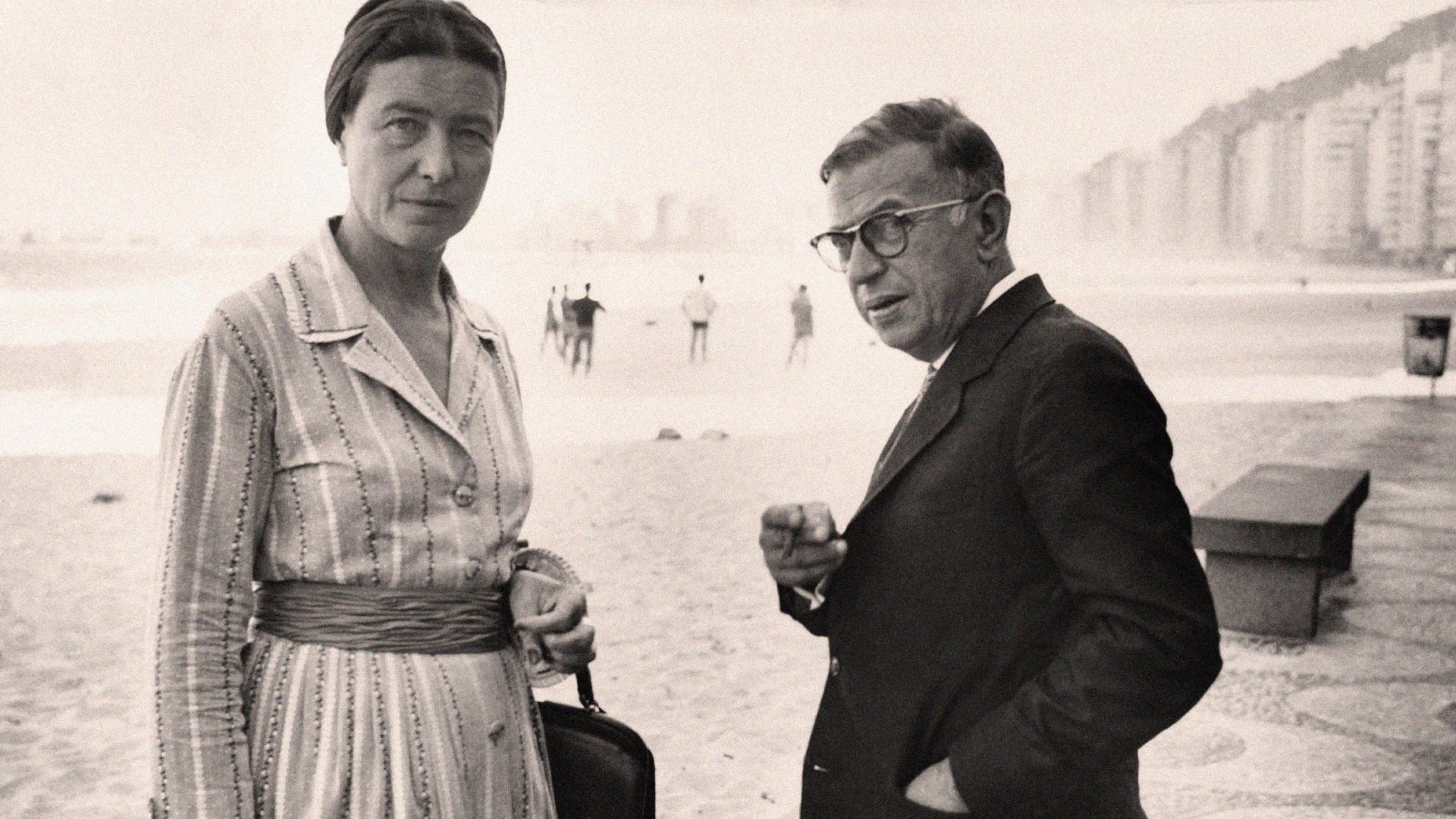Jean-Paul Sartre died in Paris on 15th April, 1980. 50,000 mourners followed his cortège along the Boulevard du Montparnasse to the cemetery. Among them was his soul mate Simone de Beauvoir. They’d met in 1929 when they were students at the École Normale Supérieure. He was 24 and she was 21. For over half a century they were first lovers, then the most intimate of friends, no matter how close they got to other people.
Sartre’s Being and Nothingness became the bible of existentialism, and Beauvoir’s The Second Sex the most important feminist book of the 20th century. The world was fascinated by their relationship which Beauvoir declared the “one undoubted success of my life”. She died six years after Sartre, almost to the day, on 14th April 1986. Her funeral also drew large crowds, though smaller than Sartre’s. Their ashes were interred in the same grave. The Sartre-Beauvoir relationship is so famous that there’s even a square named after it in St-Germain-des-Prés: the Place Jean-Paul-Sartre-et-Simone-de-Beauvoir.
Beauvoir and Sartre were radical in lifestyle and politics and seemingly unbound by convention.
This philosophical power couple never lived together, and they didn’t have children. In the heyday of existentialism journalists took a salacious interest in their “pact”, their open relationship. Beauvoir, in particular, was often asked about it. Both were determined to live their philosophy of freedom. A bourgeois marriage with expectations of sexual fidelity would be completely at odds with that and with their inclinations. Their relationship was “necessary”, they told each other, but that didn’t preclude both having “contingent” affairs, some very passionate, others as it turned out, highly exploitative. They were to be transparent to one another, completely honest, and to recount the details of their affairs to one another. Nothing was to be hidden. Very little was.
For many years this was held up as a model of an existentialist alternative to the largely Christian presumptions built into marriage: pressures to settle down together, to own property, to have children. Beauvoir and Sartre were radical in lifestyle and politics and seemingly unbound by convention. This was the kind of liberation that their existentialist philosophy promised: a non-exclusive partnership of intellectual equals without ties. No one was trapped, no one forced to give up on their dreams, or to conform with others’ expectations for them. From outside this may have looked like a philosophically-worded pretext for Sartre to sleep around, finding many willing partners among his young acolytes. But Beauvoir too had many lovers, both men and women, and several long-lasting and passionate relationships, including with the American novelist Nelson Algren, and then with Claude Lanzmann (he of Shoah fame), even moving in with him. She never lived with Sartre.
The Beauvoir-Sartre relationship was, however, more complicated and sometimes more sordid than this suggests. They might have kept their pact with one another, but that didn’t mean they were particularly pleasant to, or open with, the people they became close to. The evidence from their many published diaries and letters shows Sartre as a compulsive seducer, a sex addict with minimal personal hygiene who didn’t seem to enjoy sex much, running multiple simultaneous affairs while keeping his lovers ignorant of each other’s existence. Beauvoir sometimes helped him with his conquests by pre-seducing young women herself before passing them on to him. She also groomed and bedded at least one of her 17-year-old lycée students.
The sex lives of philosophers might seem a topic for the prurient and not of direct relevance to their thought. Whether Ludwig Wittgenstein, as one biographer, William Bartley III, claimed, had regular anonymous sex with young men in Vienna, or was more-or-less celibate throughout his life, is unlikely to affect how I read Philosophical Investigations. But in this case Sartre and Beauvoir were attempting to live their philosophy, not just write about it. Their sexual relationships were an instantiation of their philosophy.
In his 1945 lecture “Existentialism is a Humanism”, Sartre even suggested that part of the anguish of existence is that when we make a choice about how to live, we should act as if all humanity were watching us. Our individual choices are not just choices for us, but, if we are authentic, we become exemplars of how we believe people in our epoch ought to live.
From the available evidence it seems the Sartre-Beauvoir pact worked better for them than it did for those they became close to. Sartre and Beauvoir’s freedom often came at a high cost to those in contingent relationships with them. Some became victims. There are probably better ways to live.










